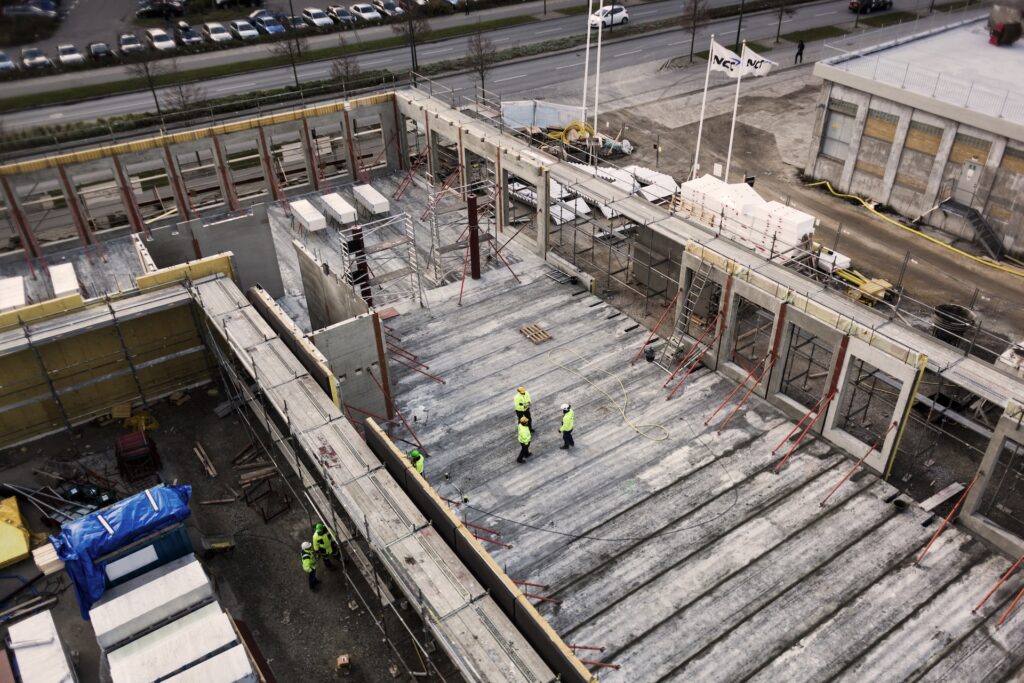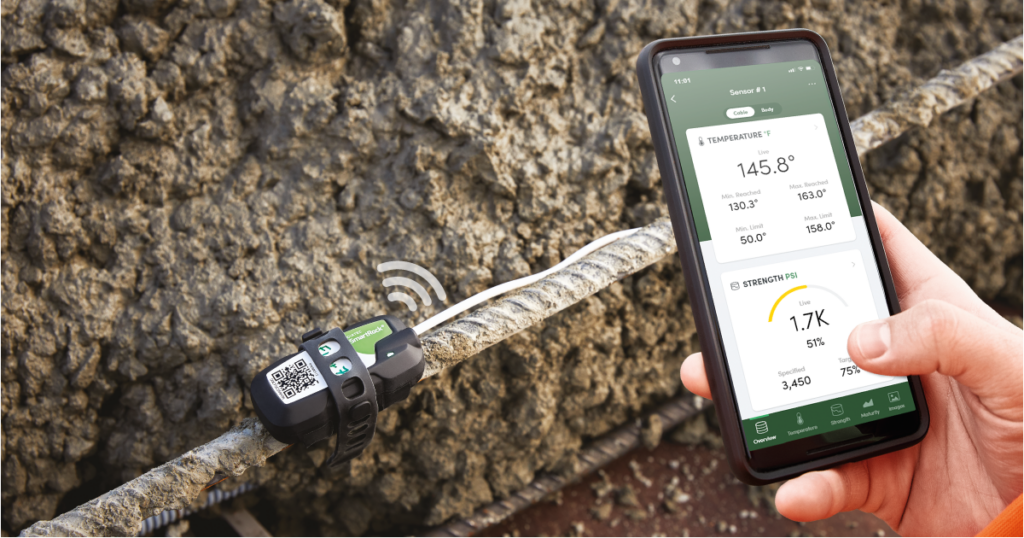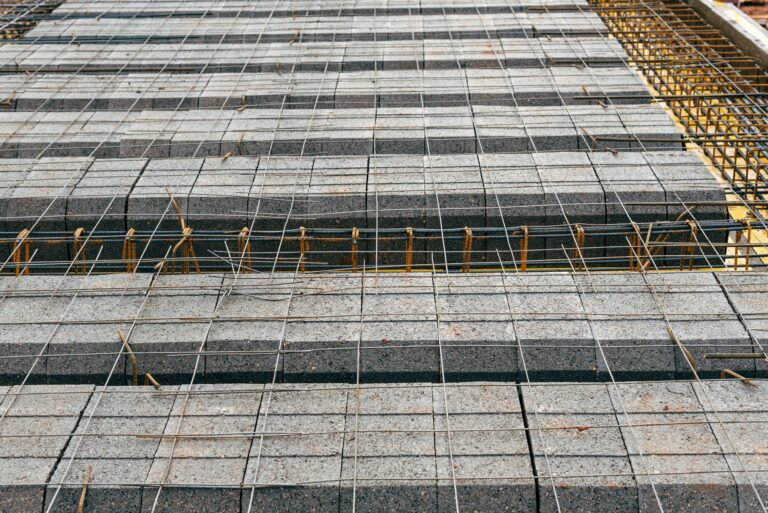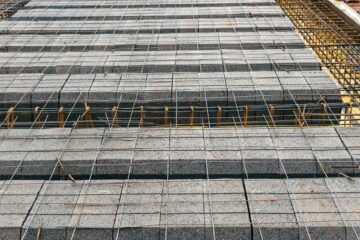Let’s resume our “Back-to-Basics” series. In this latest edition, we will delve into the use of concrete slabs, and their importance when building strong and durable structures.
Explore 12 Futuristic Technology Trends Solving Concrete's Biggest Challenges.
What Are Concrete Slabs?
Slabs are flat, horizontal surfaces made of poured concrete, typically used in construction for floors, ceilings, roofs, and foundations. They provide a durable, strong base that can support heavy loads and resist wear and tear over time. Let’s review some of the main types and features of these elements.
Types of Concrete Slabs
- Slab-on-Grade:
- Poured directly on the ground and used for building foundations, such as in residential homes, warehouses, and factories.
- Typically reinforced with steel bars (rebar) or wire mesh to enhance strength and crack resistance.
- Suspended or Elevated Slabs:
- These slabs are used in multistory buildings, where they are supported by beams, columns, or walls.
- Contractors often use them in commercial buildings, parking garages, and bridges.
- Precast Concrete Slabs:
- Manufactured off-site in a controlled environment and transported to the construction site for installation.
- Used in large-scale projects to speed up the building process and ensure uniform quality.
- Post-Tensioned Slabs:
- Reinforced with steel tendons that are tensioned after the concrete has cured, giving them added strength and flexibility for large-span applications like bridges and parking structures.
Read more about post-tensioned slabs here!
How Are Concrete Slabs Helpful?
Concrete slabs are known for their durability and wear resistance, often lasting for decades with minimal upkeep. To improve strength and prevent cracking, contractors reinforce them with rebar or wire mesh. The thickness of a slab is determined by its application—residential slabs typically range from 4 to 6 inches thick, while industrial slabs are much thicker, often 8 inches or more. Contractors also finish the slabs in different ways, such as smooth, textured, or polished. This depends on functional and aesthetic needs.

What Is Their Function in Construction?
Concrete slabs are used in various ways, some including foundations, floors, and roadways and pavements a critical component in the construction of large structures because of their strength, stability, and durability, let’s take some time to explore how they’re typically used.
1. Foundation
They offer structural support! In many large buildings, concrete slabs serve as the foundation. They distribute the weight of the building evenly across the ground, preventing settlement and ensuring structural integrity.
2. Floors
Contractors also use concrete slabs in multistory buildings. For skyscrapers, office buildings, and residential complexes, concrete slabs go on the floors. Reinforced elements provide the necessary strength to carry the weight of the structure and resist loads from people, furniture, and equipment.
3. Roof Systems
In certain buildings, concrete slabs are used for roofs, providing a strong and fire-resistant solution. Reinforced slabs are particularly common in commercial or industrial buildings.
4. Bridges and Infrastructure
In bridges, concrete slabs are used as the deck to support vehicles and resist both static and dynamic loads. They also act as a foundation for other road infrastructure like tunnels and viaducts.
5. Load Distribution
The elements can span wide distances with minimal support, making them ideal for open-plan spaces like stadiums, parking garages, and exhibition centers. For these cases, post-tensioned or prestressed concrete slabs offer added strength.
Concrete Slabs Don’t Come Without Difficulties…
While concrete slabs offer durability and wear resistance, lasting for decades with minimal upkeep, this doesn’t happen out of chance. Contractors must work on ensuring the quality of their concrete by monitoring its real-time strength development with accurate data, so they know when it reaches the desired strength threshold. Having real-time information allows contractors to improve efficiency and reduce possible re-work costs.
In addition, improper curing can cause cracking in concrete slabs. This tends to happen because temperature variations during the curing process can cause strength inconsistencies. Think of sudden weather changes, or the state of the concrete when it’s being transported to the jobsite. This means that for the elements to become durable, contractors should continuously monitor temperature, onsite and remotely. Doing so will help to identify and mitigate any risks.
Advanced Concrete Technology Is Here to Help!
Now that we know what key factors to look out for when it comes to ensuring the quality of concrete slabs, we can explore some options that will help guarantee good quality assurance. For example, many contractors need to collaborate closely with testing labs to ensure the concrete meets the required standards. They can also make use of more precise methods such as concrete maturity and smart sensors to guarantee accurate control of the temperature and strength gain of the concrete to optimize its performance in the long run.

The advanced technology of the SmartRock® wireless sensors is the perfect fit when it comes to concrete slabs. These sensors monitor temperature and strength, and since they are fully embedded in the rebar, they are easy to use, allowing contractors to make quick decisions on site and preventing unnecessary setbacks.










